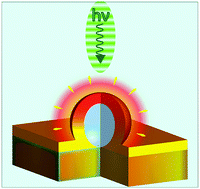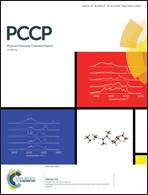Photo-induced heat generation in non-plasmonic nanoantennas†
Abstract
Light-to-heat conversion in non-plasmonic, high refractive index nanoantennas is a key topic for many applications, including Raman sensing, laser writing, nanofabrication and photo-thermal therapy. However, heat generation and propagation in non-plasmonic antennas is increasingly debated and contradictory results have been reported so far. Here we report a finite element analysis of the steady-state temperature distribution and heat flow in SiO2/Si core/shell systems (silicon nanoshells) irradiated with different continuous wave lasers (λ = 532, 633 and 785 nm), under real working conditions. The complex interplay among the optical properties, morphology, degree of crystallinity of the nanoshells, thickness dependence of thermal conductivity and interactions with the substrate has been elucidated. This study reveals that all of these parameters can be appropriately combined for obtaining either stable nanoshells for Raman sensing or highly efficient sources of local heating. The optimal balance between thermal stability and field enhancement was found for crystalline Si shell layers with thicknesses ranging from 40 to 60 nm, irradiated by a NIR laser source. On the other hand, non-conformal amorphous or crystalline shell layers with a thickness >50 nm can reach a very high local temperature (above 1000 K) when irradiated with a low power density (less than 1 mW μm−2) laser sources. This work provides a general approach for an extensive investigation of the opto-thermal properties of high-index nanoantennas.



 Please wait while we load your content...
Please wait while we load your content...